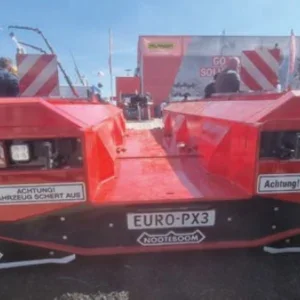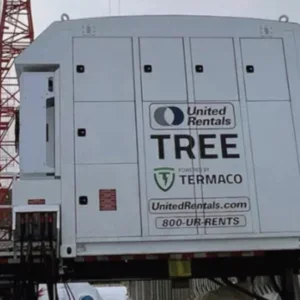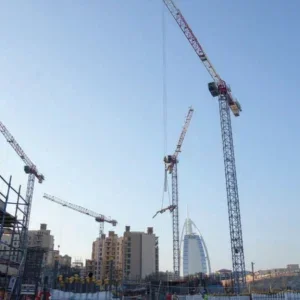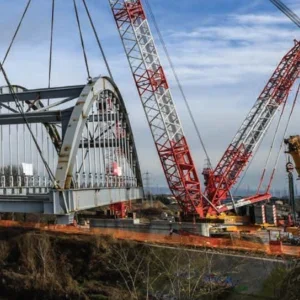UK loader crane dealer Terex-Atlas UK has one of the largest crane service operations in the world. Although located in a relatively small country, and only one part of the Germany-based manufacturer (it was bought in 2001), Terex-Atlas UK has two key differences. First, it is Terex-Atlas’s only national division with its own direct sales force. Even in Germany Atlas cranes are sold through dealers. Second, a very large proportion of the company’s business is controlled only a handful of customers. Builder’s merchant firms tend to have hundreds of cranes on trucks to deliver bricks and other heavy loads to customers across the UK.
“Customers are crying out for good service,” says national service manager Andrew Taylor. Without a working crane, a delivery truck is stuck. “With a customer like Jewson, it’s all about KPIs,” he says. Key performance indicators include the first time fix rates, the number of service inspections completed on time and response times. These customers think in terms of the total cost of ownership of the 8-10 year life of the crane, and often order a complete maintenance contract, he says. “They want to be able to say at the end of the crane’s life, ‘I’ve paid a resonable cost for this crane.'”
Service may take the form of an emergency call-out – which covers everything except abuse – or a maintenance contract, only for regular work scheduled in advance and carried out three or four times a year. There are currently 2,500 Terex-Atlas cranes under full service contracts, which include both emergency repairs and scheduled work.

Terex-Atlas service van

Inside the van
A fleet of 33 service technicians roam the country in vans (with one exception), monitored by GPS and tracked on a screen in the company’s Bradford headquarters. The exception is a service motorcycle for the London area. On the bike, an engineer can cut through the near-constant London traffic gridlock and get the engineer to the site in about an hour to examine the situation, or help move the lorry off the road, without having to find an off-road parking spot for a full-size van.
Service “is a bit of a gold mine, really,” says Lee Maynard, UK general sales manager.
The company says it aims for a four-hour response time, or about an hour with the bike. The most common reason for call-out is to fix broken control levers snapped off by a panicking operator who has just overloaded the crane, Maynard says.
Field engineers record results of regular inspections on checklists, and grade the condition of elements from 1-5, with 4 and 5 requiring short-term action. Plans to be able to run through inspection checklists on a PDA and e-mail them direct to clients and flag up items needing attention are probably about two years away.
Engineers are currently using mobile picture phones, popular in the UK to photograph any crane damage that they notice in working on cranes currently out on rental (see “Toy or Tool”, Cranes Today April 2003, p. 54-5). They can email the pictures back to headquarters, and headquarters can send them out to their customers – the rental companies – so they can bill users.
The service operation has taken off in the two years following the company’s closure of its Hamilton, Scotland factory, even though it has diversified into civil engineering (with grab cranes) and crane rental. Overall about 30% of the company’s cranes are on service contracts, says Taylor, though when considering their core audience, builders’ merchants, that figure is more like 90%, says Maynard.
The spare parts department, also based in Bradford, also supports maintenance techs, delivering the next day’s parts to inside the service vans during the night. “It’s faster than delivering to your local TNT office, and some parts are too big for drop boxes in garages,” says parts manager Andy Oxley. The company uses a network of specially-vetted personnel with keys to the vans to do the drop-offs.






